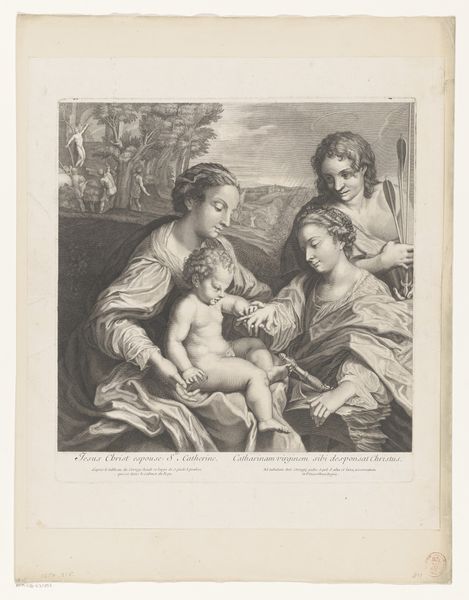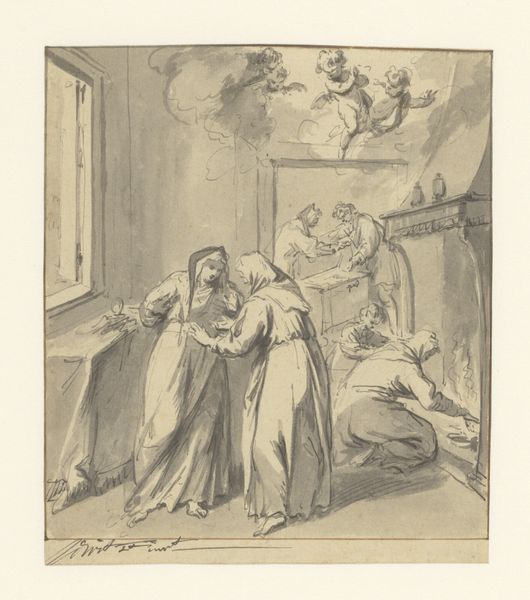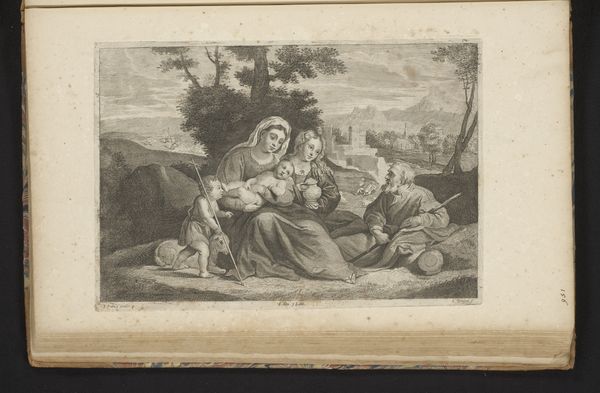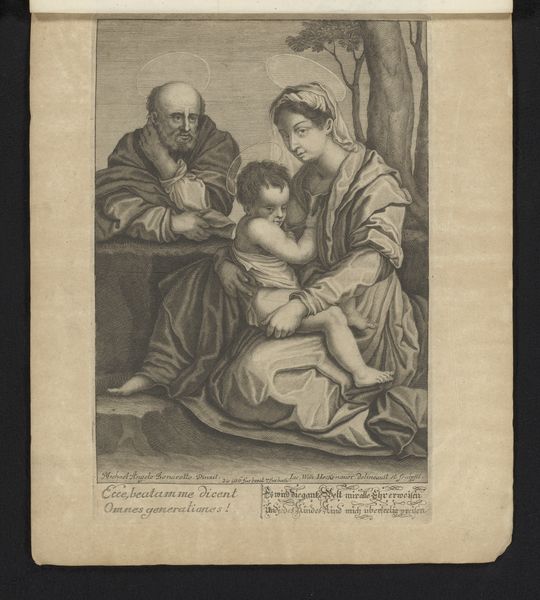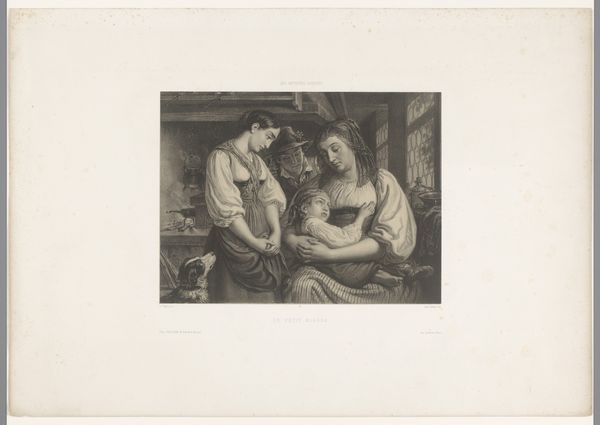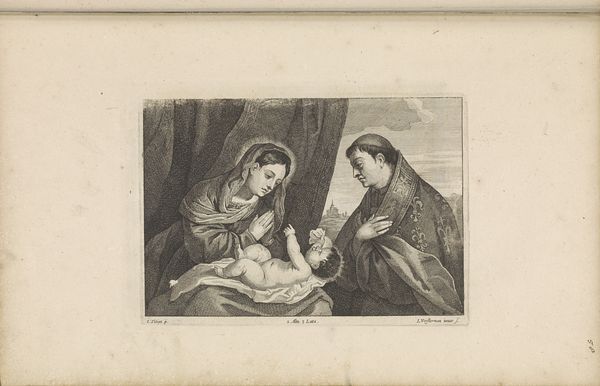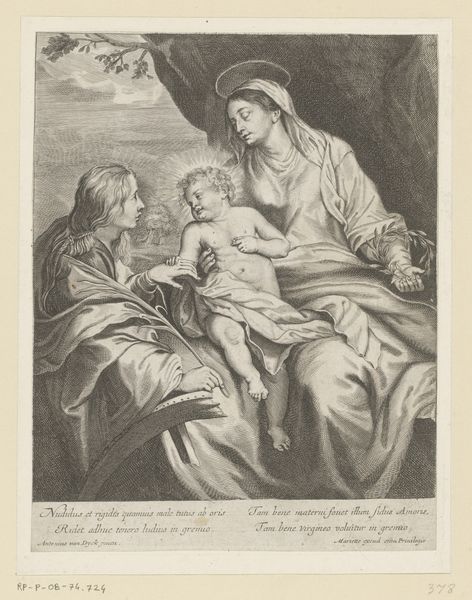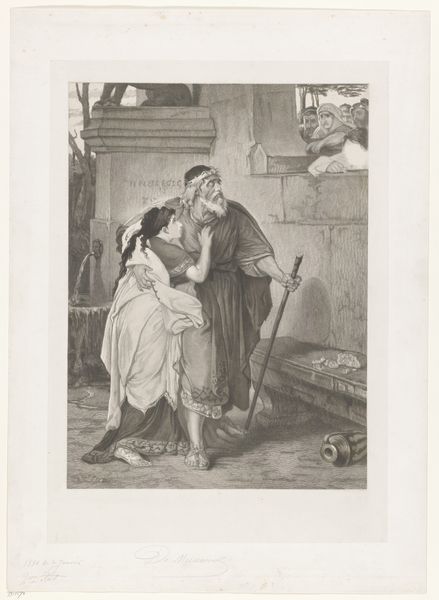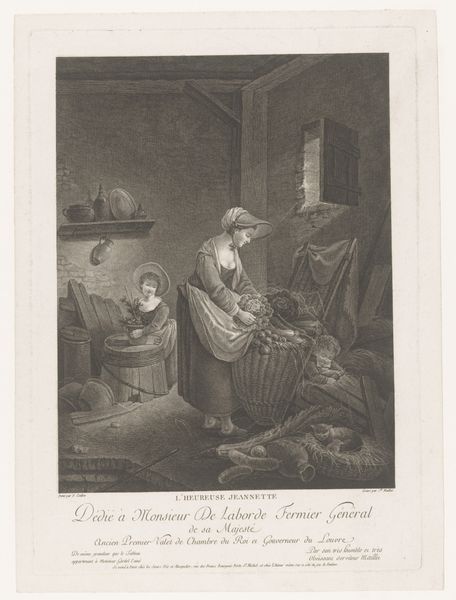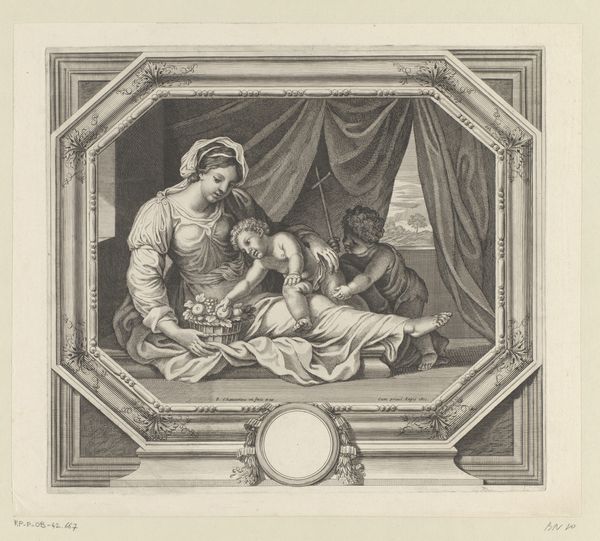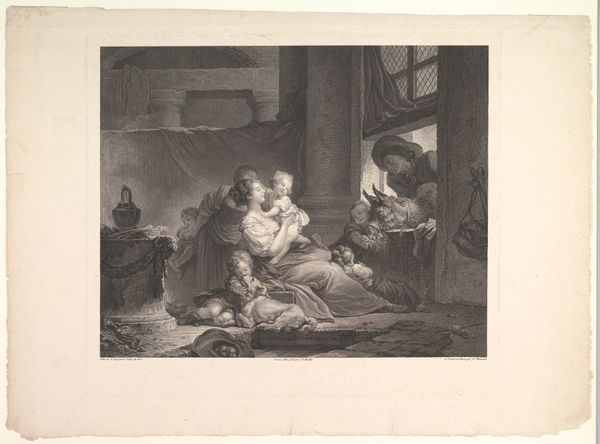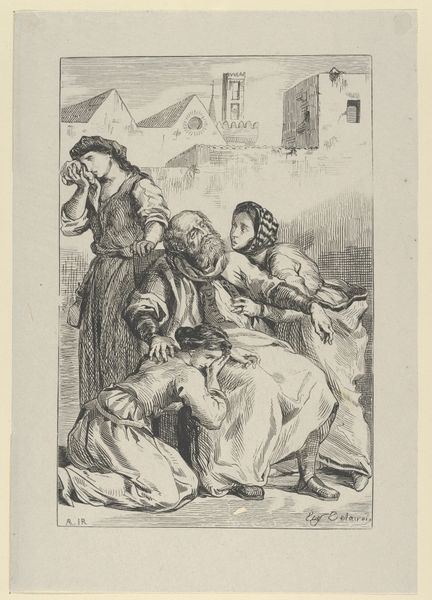
print, ink, engraving
#
portrait
#
baroque
# print
#
figuration
#
ink
#
line
#
history-painting
#
engraving
Dimensions: height 185 mm, width 227 mm
Copyright: Rijks Museum: Open Domain
Curator: Giovanni Battista Pasqualini’s engraving, "Johannes de Doper, Christus en Maria" from 1621, presents a scene teeming with subtle tension, rendered in precise lines and stark contrasts of light and shadow. Editor: The dramatic lighting immediately strikes me. It sculpts the figures, especially Christ, giving him a powerful, almost theatrical presence within this intimate scene. Curator: Pasqualini's status and role as an Italian engraver situated him firmly within the networks of printmaking, enabling widespread distribution of imagery, but there's a hierarchy even within that production. Consider the materials used: the paper, the ink, the metal plate - their value influenced who could participate in both the creation and dissemination of such works, impacting their accessibility and audience reach. Editor: Absolutely. Focusing on the composition, I notice how the gaze of each figure draws you into the scene, guiding your eye around a tightly-knit pyramidal arrangement. Christ is bestowing knowledge upon the others at the table while one passively waits for what comes next. Curator: Consider the economic and social dynamics implied by such a composition! The ability of institutions and religious orders to commission works like these helped propagate particular interpretations, reinforcing hierarchies, not simply illustrating faith, but structuring a society around them. This speaks directly to the patronage system and how Pasqualini likely depended on religious and civic institutions. Editor: Yes, and formally speaking, note the meticulous detail Pasqualini invested in each figure, from the rendering of their drapery to the articulation of their facial expressions; yet all exist only due to Pasqualini’s line, its modulation creating tonal variations to convey volume. This, too, establishes a hierarchy wherein the medium is subservient to what it depicts! Curator: But consider this relationship differently: without the particular weight of ink and character of the printing plates, such imagery may never have touched and changed the lives of contemporary peoples on the street, spreading and solidifying narratives in society through very materiality. How those religious leaders hoped these stories would be received and what their original intents actually inspired is no longer theirs alone to claim, it belongs to culture and its continued interpretation. Editor: I concede there’s an undeniable democratizing element present with the prints; still, I return to the formal command of Pasqualini's artistry as essential to this work's emotive power. Curator: Perhaps it is in our own material consumption and appreciation today we give Pasqualini’s labor further value.
Comments
No comments
Be the first to comment and join the conversation on the ultimate creative platform.
